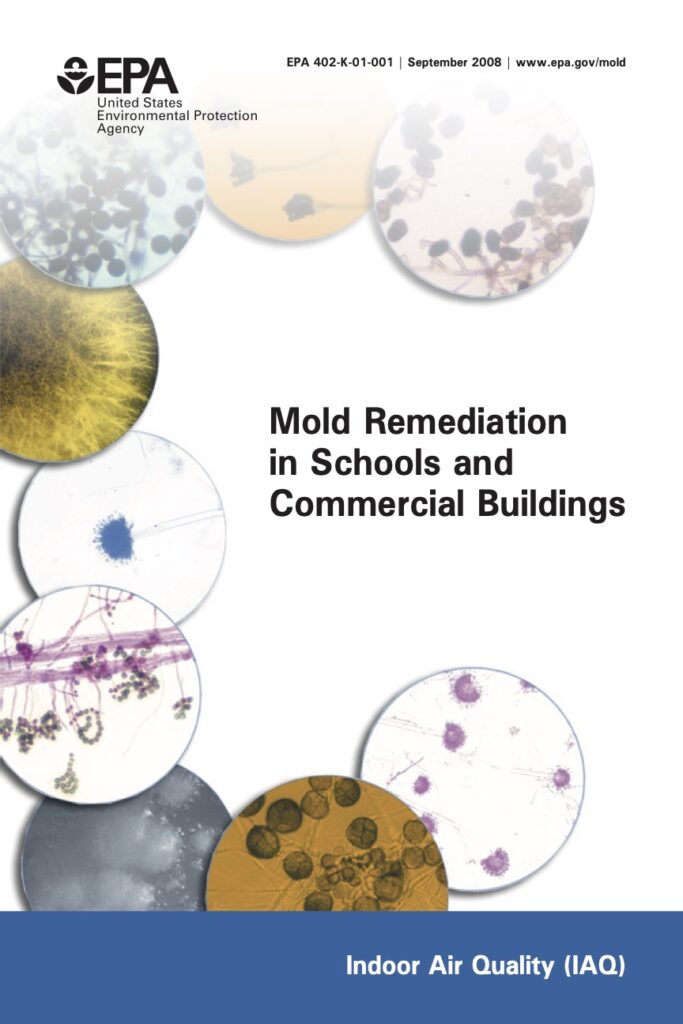This 56-page document, prepared and produced by the U.S. EPA’s Indoor Environments Division (IED) is a must-read for anyone dealing with mold problems, particularly those who do so professionally.
As the EPA doesn’t regulate mold nor assign safe levels for the number of airborne mold spores in any indoor environment, the document presents recommendations on mold remediation, rather than enforceable rules or law.
In addition to a small number of key points excerpted above right, the full PDF, found above and on the EPA’s website, is a must-read and treasure trove of factual information on mold and mold remediation.


